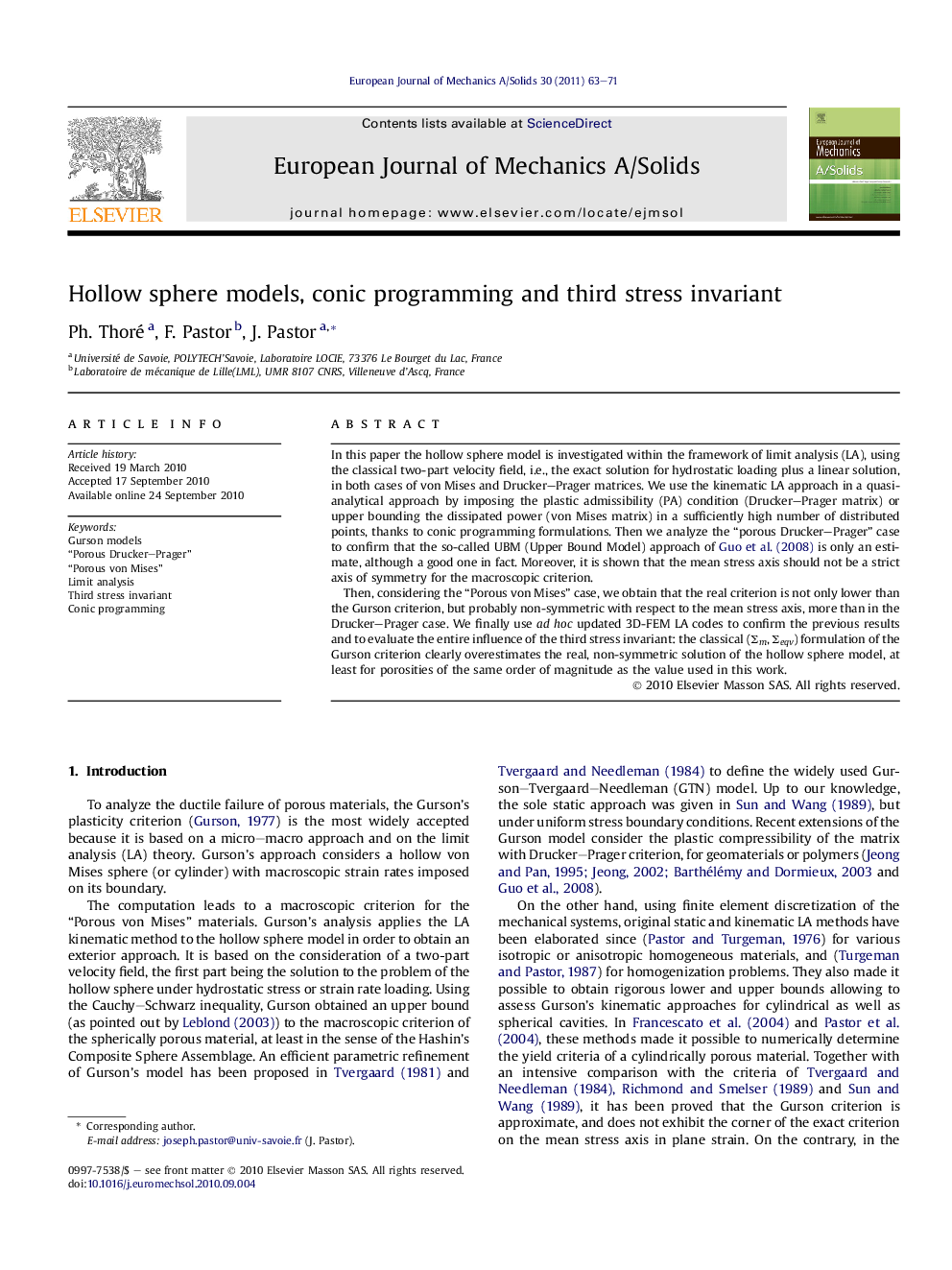| Article ID | Journal | Published Year | Pages | File Type |
|---|---|---|---|---|
| 778126 | European Journal of Mechanics - A/Solids | 2011 | 9 Pages |
In this paper the hollow sphere model is investigated within the framework of limit analysis (LA), using the classical two-part velocity field, i.e., the exact solution for hydrostatic loading plus a linear solution, in both cases of von Mises and Drucker–Prager matrices. We use the kinematic LA approach in a quasi-analytical approach by imposing the plastic admissibility (PA) condition (Drucker–Prager matrix) or upper bounding the dissipated power (von Mises matrix) in a sufficiently high number of distributed points, thanks to conic programming formulations. Then we analyze the “porous Drucker–Prager” case to confirm that the so-called UBM (Upper Bound Model) approach of Guo et al. (2008) is only an estimate, although a good one in fact. Moreover, it is shown that the mean stress axis should not be a strict axis of symmetry for the macroscopic criterion.Then, considering the “Porous von Mises” case, we obtain that the real criterion is not only lower than the Gurson criterion, but probably non-symmetric with respect to the mean stress axis, more than in the Drucker–Prager case. We finally use ad hoc updated 3D-FEM LA codes to confirm the previous results and to evaluate the entire influence of the third stress invariant: the classical (Σm, Σeqv) formulation of the Gurson criterion clearly overestimates the real, non-symmetric solution of the hollow sphere model, at least for porosities of the same order of magnitude as the value used in this work.
